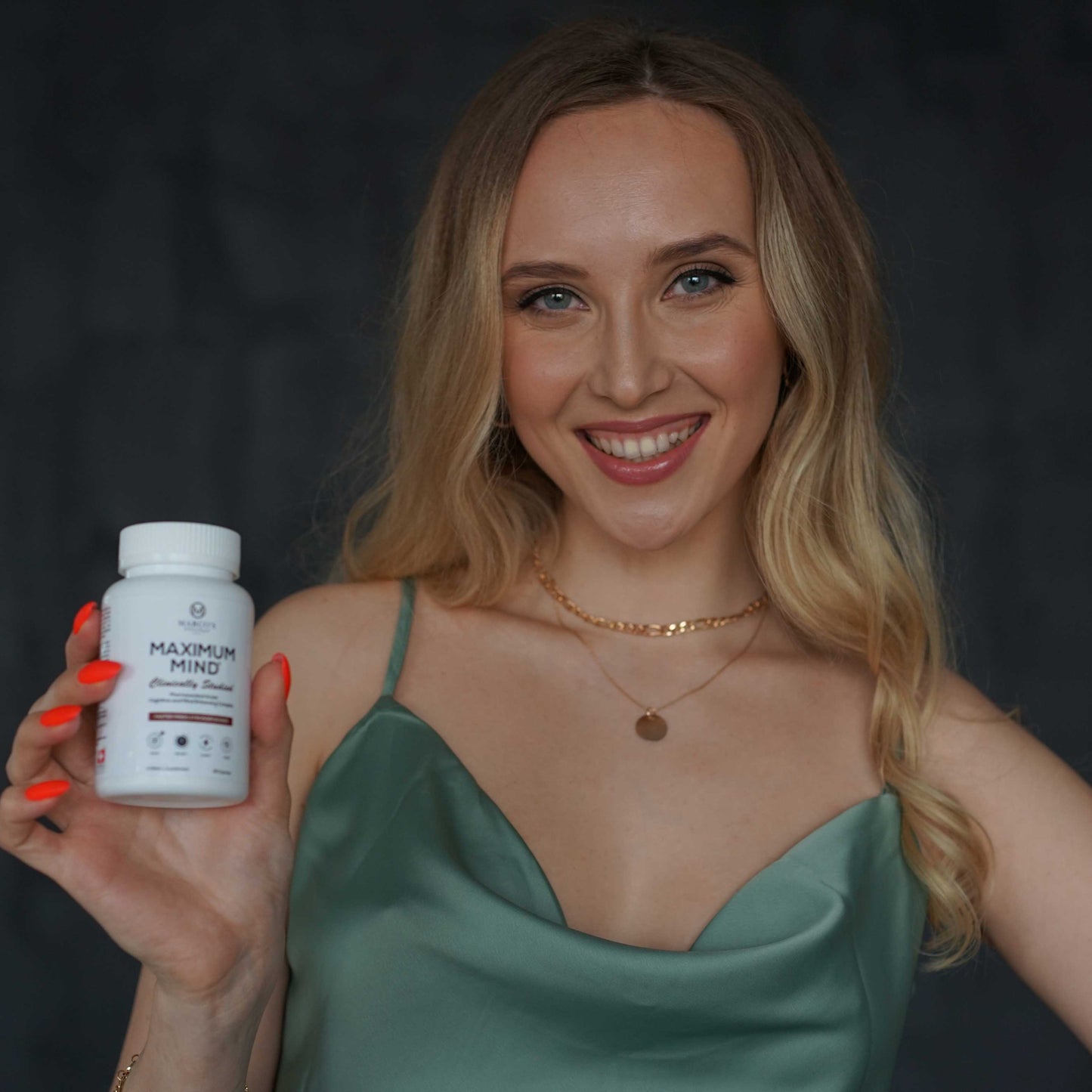
The Short Story
Marco’s Grounds follows two main tenants. The first one is known as the Pareto Principle, i.e., 20% of causes result in 80% of effects. The second one is Occam’s Razor, i.e., entities should not be multiplied without reason.
Our formulation philosophy uses minimum effective doses and synergies and multiplicators, which enable us to produce a significant effect at safe doses.

The Long Story
Choosing the optimal dose for a given ingredient in our formulation is a critical topic, so we want to share a bit about the principles that help guide our decisions at Marco’s Grounds. Our principles derive from complexity science – the science of complex adaptive systems. They direct our research, approach formulation, and dosing. They consider scientific evidence on the change in effect caused by differing exposure levels, i.e., the dose-response relationship. They do this in a way that honors complexity.
The concept of a dose-response relationship isn’t unique to complexity science. What is unusual is how complexity science interprets aspects of this relationship, looking for how the response changes as dose increases, when more than one ingredient is combined, over a duration of time, and based on timing.
Assess If Ingredient Is Dose-Dependant and Existence of Effectiveness Threshold
The first consideration, and the easiest, is whether an ingredient is dose-dependent. If the effects increase when the dose of something is increased, the results are said to be dose-dependent, and the implication is that more is better—within the range, it would typically be used. An example is daily values (DV) for vitamins. Eating a diet that supplies 100% of the DV for all vitamins would be expected to produce better health effects than a diet that provided only 50%, which would have better results than a diet that supplied 25%. When an ingredient is dose-dependent, we select an adequate dose to produce the desired effect, but also low enough to minimize the probability of undesired effects, i.e., side effects.
Dose-dependent implies benefits increase with a higher dosage. But this can come with a cost—undesired side effects often appear and grow stronger as exposure increases.
Dose-dependent does not mean that benefits go up in a straight line. There are diminishing returns: as dose increases, benefits often increase significantly within a range, and they tend to plateau, only growing gradually at higher dosages. Many dose-dependent ingredients follow this type of dose-response relationship, a pattern that fits with the Pareto Principle, also known as the 80/20 Principle. Some real-world phenomena follow exaggerated versions of this principle, e.g., 90/10 or 95/5. When this principle is translated to dietary supplements, it means that much of the effect, i.e., 80%+ of benefits, might occur from a relatively low amount, i.e., the first 20% of the dose of an ingredient. When this is the case, it’s crucial to identify the range where significant changes in response occur and beyond which increased effects are more gradual.
A Pareto Principle effect occurred in a study giving different daily dosages – 125 mg, 250 mg, 500 mg – of Ashwagandha extract. The effect size was slightly more significant for the higher dose, but most of the change was evident with the lower amounts [1].

Exercise is an excellent example of the pareto principle in action. Most of the health and general fitness benefits from training occur when a person goes from being sedentary to moderately active, e.g., the minimalism series of posts on the Marco’s Grounds Blog. Doubling the amount of exercise again does not double these benefits—it adds a marginal amount of additional health and fitness. And, doubling activity once more produces even less added benefits.
Beyond a threshold amount of exercise, additional benefits come at the cost of increasingly more time and effort for increasingly diminishing returns. This idea of a threshold amount is crucial because the best value from our efforts comes from ensuring we are following the strategies that allow us to get the 80% of benefits from 20% of doses.
Assess If the Ingredient Is Hormetic and Its Hormetic Range
We mentioned that some ingredients are dose-dependent, i.e., more is better within reason; others are biphasic, i.e., an inverted U-shaped dose-response pattern. Biphasic implies that there can be a beneficial effect at low doses and no impact or an unwanted effect at higher doses, as is the case for example when looking at melatonin supplementation. This type of dose-response is sometimes called hormesis. It can be thought of as being akin to exercise training, where the right amount of exercise builds fitness, i.e., a beneficial outcome. Still, excessive exercise increases the risk of injury and overtraining, i.e., unwanted effects.
Another Example Is Boiling Water. The Right Amount Of Heat, I.E., 100° C, Boils Water. More Heat Won’t Make The Water More Boiled. Too Much Heat Can Have Detrimental Effects On The Water, E.G., Applying 600° Celsius To The Water Would Instantly Turn It Into Steam, Thus Having The Unwanted Effect Of Evaporating All Water.
Hormetic factors provide a challenge to the body, i.e., mild stress, that causes complex adaptations. These adaptations result in being better able to respond to similar challenges in the future. A positive side effect from this process is that the body is left more capable of responding to other challenges. In the literature, this is called non-specific adaptation. Many herbal adaptogens and some flavonoid molecules such as curcumin and resveratrol tend to follow hormetic dosing principles. There’s typically a hormetic zone where there’s a favorable biological response for compounds in this category. It’s essential to be in this zone; it’s just as important not to be above it. Adaptive capacities are not unlimited and often require time to emerge. Thus, it can be better to err on the lower side of the range, allowing the body to adapt gradually.
Sun exposure is an example of a hormetic response. Some exposure improves our ability to tolerate the sun, but we get an unwanted sunburn result if we overdo it.

Identify Additive Effects and Synergies between Ingredients
Ingredients might have additive effects or synergies; they may also work efficiently at specific ratios with other elements. A simple example of an additive effect would be providing several different supplemental forms of an ingredient that enter into metabolic pathways at various points. Niacins and cholines are examples. The dose of vitamin B3 as nicotinic acid might be higher than if both nicotinic acid and niacinamide were combined. The same principle applies to choline cognitive enhancers (or smart drugs) like citicoline and alpha-GPC—the amount of one on its own needed to induce an effect will be much higher than when both are ingested together.
Synergy in this context means that one ingredient impacts the effects of another. Some ingredients improve absorption, metabolism, or others’ effects—when these synergies exist, doses needed are typically lower (often much lower) than when one compound is administered on its own. For instance, L-Taurine and creatine monohydrate (see Creatine as a Nootropic) have a similar relation. L-Taurine enables creatine monohydrate to enter the cell membrane more efficiently, thus allowing the user to produce the desired effect with lower doses then if creatine was taken alone.
Sometimes the ratio of two or more ingredients acts to amplify effects. When this is the case, while the absolute amount of the ingredients is essential, it’s the ratio that really matters. Huperzine A and bacosides are an example of this relation. Combining huperzine A and bacosides at a ratio of roughly 400:1—the physiological ratio—has displayed better responses, at lower doses, compared to giving huperzine A or bacosides alone, for example.
Consider Initial Responses and Their Potential Change over Time
In complexity science, it’s understood that the body learns as it interacts with whatever it’s being exposed to, e.g., dietary supplements, exercise, stress. This is the process of adaptation and can result in response to something changing over time. This idea of adaptive responses contrasts with the tendency to assume that the same response will be sustained over time.
A sustained response means that if X occurs after one week, X will still be occurring months later. An adaptive response model recognizes that many things do not follow this pattern. Exercise is an example. Starting a new exercise routine will improve fitness. Continuing to follow the same routine month after month can result in a plateau, followed eventually by overtraining. But changing the pattern, or taking time off, i.e., cycling, can result in sustained positive results (see Maximum Mind Experience)
Some dietary supplements can follow adaptive response patterns, with the initial positive effects decreasing and occasionally going away entirely over more extended periods. In general, adaptive responses are much more likely to occur at higher doses and can often be prevented with lower dosing. It’s important to be alert for these types of reactions when reviewing scientific literature because they affect formulation and influence suggestions about cycling the ingredient.
Intensity And Duration Interact To Accelerate The Adaptation. The More Intense And Prolonged Something Is, The Quicker We Can “Overtrain” To It.

Account For Circadian Biological Rhythms
The next consideration has to do with timing and body clocks. Our physiology has circadian biological rhythms. It’s great to optimize wakefulness capabilities and physiology at the beginning of our day; it wouldn’t be such a good idea to be doing this just before we plan on going to sleep.
At Marco’s Grounds, when we approach formulation, we think about timing. Does the ingredient or effect we are after have a rhythm? Do the nutrients we are considering have a timing window?
Some minerals, vitamins, and other nutrients (e.g., CoQ10, melatonin, OPCs) either have circadian rhythms or have different responses depending upon time of the day when they are taken.
Refine Dosing Based on the Desired Effects
The last consideration is the intended effects. Some ingredients can have more than one physiological effect; in pharmacology, we call this the action mechanism. A different quantity might be needed depending upon the desired outcome or reasons for including the ingredient. The quantities required to support a pathway or process, especially as part of a complex formulation, might be much different, i.e., lower than the amount needed to influence other outcomes.
Complexity science teaches us that we should pay attention to how something responds rather than focusing on what’s being done. The real test of formulation decisions is about the response. Responses for a group tend to follow bell curves (i.e., normal distributions). While many persons will cluster around the average, there can be outliers.
Returning to our exercise example, an identical routine won’t affect everyone the same way.
Most people will get a reasonably similar benefit, i.e., they’ll be responders, but some people might get tremendous benefits, i.e., they’ll be super-responders. And still, others might not gain the expected benefits, i.e., they’ll be under-responders. Variations in response are an expected outcome – using a software analogy, they are a feature, not a bug – when one looks at the world through a lens of complexity science.
When all our formulation principles are combined, the goal is to maximize responders and super-responders while minimizing under-responders
Literature
Abedon, B., & Ghosal, S. (2008). A standardized Withania somnifera extract significantly reduces stress-related parameters in chronically stressed humans: a double-blind, randomized, placebo-controlled study.
